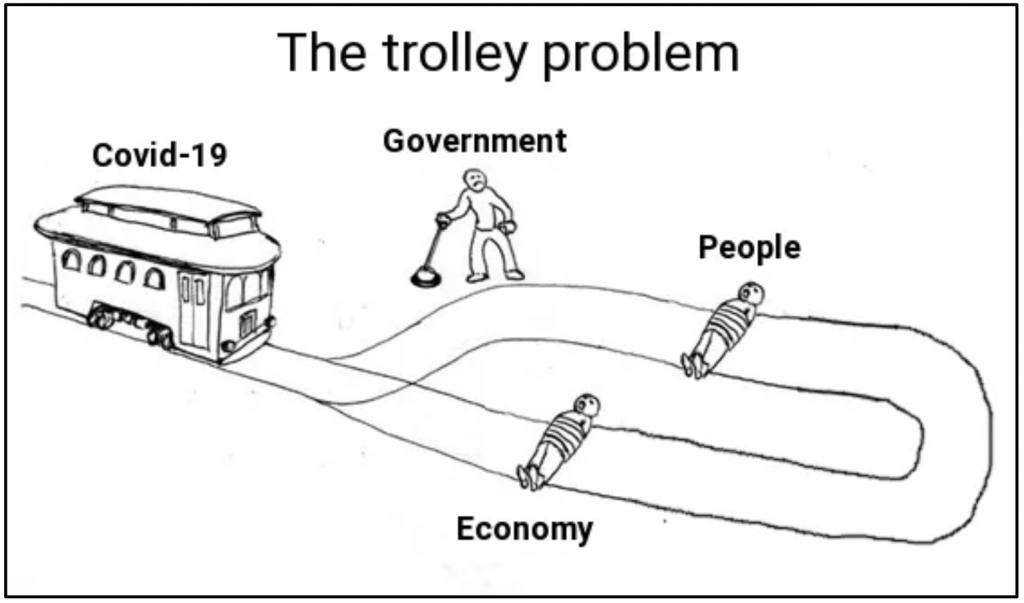One of the approaches that argues that the new coronavirus pandemic cannot be a moral dilemma for the public management is well illustrated in this image, an adaptation1 of the famous ‘trolley problem’2. Notice the back of the track. Here the question of lives x economy is not presented, but lives x lives:

(1) Moral dilemma: “experiencing a tension between the possible paths of moral action in the search for the best decision in a given circumstance, the circumstance being seen from the perspective of the one who interacts with the moral dilemma”. Among its characteristics, are: “(a) it is a complex situation, (b) created by the conflict of multiple obligations and/or interests considered certain – which could be exercised in isolation, (c) however, in a given context, only a course of action may be chosen, (d) and the option adopted may result in
remnants to those involved and/or repercussions in the organization” (SANTOS, 2019, p. 52)3.
(2) Life is a fundamental principle. The economy, in its origin, is the art of managing the house, the home, where one lives. To live, there must be life. Therefore, life x life does not correspond to a logical equation.
(3) Putting life x life is to neglect the value of life, whatever the circumstances. Therefore, it is the role of government institutions not to let their individual citizens find themselves in this dilemma. The government knew the trolley was coming, didn’t it? Human sacrifice can be seen as a moral fallacy or a low moral competence to deal with a crisis.
(4) This analysis does not ignore the sad fact that we will lose countless people. However, part of the moral reasoning is that the pandemic is a moral test for government officials. What moral reasoning to follow?
1 https://9gag.com/gag/aL07jq5
2 The trolley problem was presented by British philosopher Philippa Foot in 1967: the driver of a runaway tram needs to decide the direction of your tram between reaching a group of five people who are working on the railway and, for some reason, do not realize the danger and are unable to leave the track or drive the tram to a parallel path, in which there is only one person working. In 1985, American philosopher Judith Thomson returned to Foot’s example and developed it a little further. In its rework, there is a person outside the tram with a lever that you can choose between: do nothing and allow the tram to continue on the tracks and reach five people or pull the lever and deflect the train so that it reaches only one person on the next track (SANTOS, 2019).
3 SANTOS, L. S. The ethics of public management in the light of the rationality approach: the moral dilemmas experienced in risk management and disasters in Santa Catarina. 2019. Thesis (Doctorate) – Santa Catarina State University, Center for Administration Sciences and Socioeconomic, Doctorate in Administration, Florianópolis, 2019. Available at: https://pergamumweb.udesc.br/biblioteca/index.php




